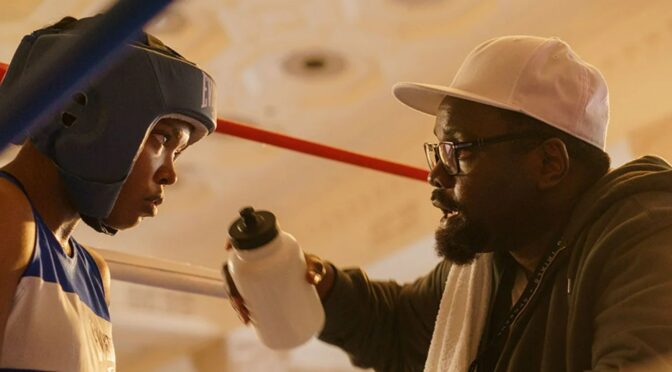The open wounds of the Flint water crisis carefully set the stage for THE FIRE INSIDE, a narrative brimming with the same vulnerabilities and resilience as the community that surrounds it. In April of 2024, the people of Flint, Michigan, organised a march to observe the tenth anniversary of the Flint water crisis. The crisis sprang from a change in the city’s water supply, which contaminated it with lead. Flint, once nicknamed Vehicle City due to being a leading manufacturer of carriages and automobiles, is the setting for boxing drama THE FIRE INSIDE, originally titled FLINT STRONG.
Flint’s water crisis and coarse winter textures are the backbone of Rachel Morrison’s directorial debut, which finds Clarissa ‘T-Rex’ Shields (Ryan Destiny), a 17-year-old Black woman, fighting for her chance to compete in the 2012 Olympics. Morrison is familiar with an underdog story of Flint’s and Shields’ ilk. She made a name for herself as the first Oscar-nominated female cinematographer for her work on MUDBOUND, telling Time when she was nominated that “Men tend to be given the benefit of the doubt. Women usually have to prove ourselves time and time again”. She frames each fight as if it were the last, an uphill battle with which she seems acquainted. When not in the enclosed space of a boxing ring, the film peppers its runtime with establishing shots of derelict buildings, paint-chipped backdrops and water towers that loom large beneath grey skies.
Found amongst the blue-ish concrete cracks of Berston Field House, Shields’ local gym, is the construction of Barry Jenkins’ screenplay. The script establishes its trajectory early on as if it were a paint-by-numbers sports biopic, before transitioning into an epilogue of that journey by committing the third act to the minutiae of post-Olympic achievement. The tropes of the genre – sweat-stained montages, punches landing harder outside the ring – feel like routine cinematic shadowboxing, but the introspective third act is an unexpected uppercut. Without this narrative turn, and the heavyweight performance from Destiny, whose wide-eyed toughness embraces every conversation like an Olympic final, THE FIRE INSIDE risks missing a punch or two.
“The tropes of the [sports] genre – sweat-stained montages, punches landing harder outside the ring – feel like routine cinematic shadowboxing, but the introspective third act is an unexpected uppercut.”
Despite director Morrison’s postscript implying THE FIRE INSIDE is about equal pay in sport, it is also unavoidably about race. In interviews, Ryan Destiny asserted, “Black women are to work twice as hard.” As Clarissa’s objective pivots from Olympic gold to cereal boxes and Nike endorsements, both of which are awarded to white athletes, her dispositions crystalise into a constant desire to prove herself amongst her peers. The bitter cold Flint setting also punctuates this aspect of the film’s themes. Beyond the well-known drinking water story, Flint is also an example of the phenomenon known as ‘white flight’ – where the population of Black people grew in proportion to White people as those with the means to do so fled the area. This context provides the backdrop to the reality that the now predominantly Black community are not the ones who chose to change Flint’s water source, as well as Clarissa’s struggles in the film. “You got this fire inside you”, Bryan Tyree Henry urges, in a quiet yet familiarly warm turn as Shield’s coach Jason Crutchfield, underscoring the fact that Shield’s biggest fight is at home.
At one stage, Jason chuckles affectionately to his wife and explains that a young girl, new to the community centre, insisted she would “be the next Clarissa Shields.” During Clarissa’s final fight, Morrison cuts to crowds of people enchanted by the TV’s glow, and this girl was likely amongst the congregation observing. In April of 2024, when Flint’s real community marched, they observed a different victory: safe drinking water. THE FIRE INSIDE’s final act is checkered with relics of Shields’ win – billboards, old newspapers and signed photographs – that are just as rickety as Flint itself, but serve as the demonstration of a community that has a culture of resilience and spirit that ensures its stories continue to be told.

